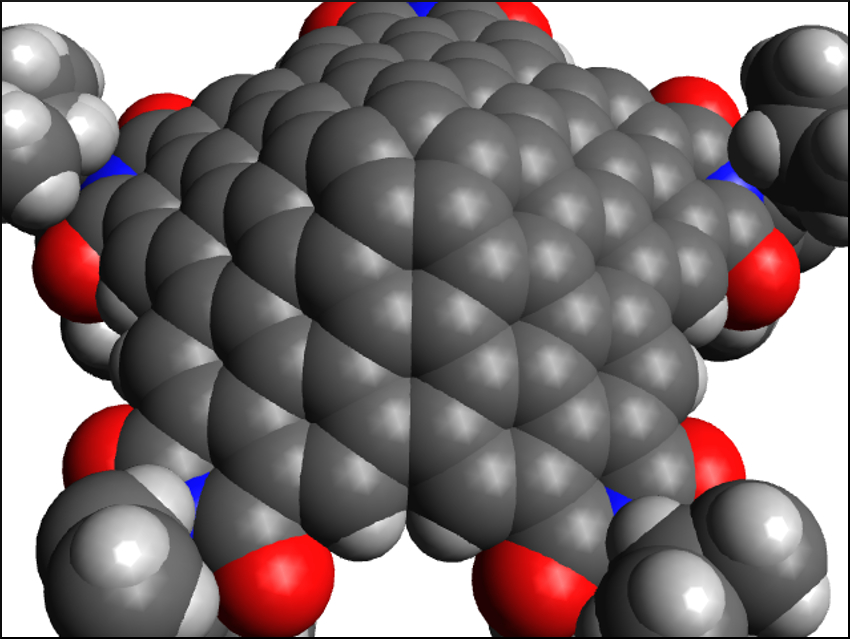Graphitic carbons with a cone shape have been observed during the synthesis of, e.g., fullerenes or carbon nanotubes. However, they had not been selectively synthesized so far.
Kazutaka Shoyama and Frank Würthner, University of Würzburg, Germany, have performed the first synthesis of a carbon nanocone. The product contains a carbon pentagon surrounded by 30 carbon hexagons (pictured), which represents the simplest structure for a carbon nanocone. The team started from a corannulene derivative, which was coupled with five naphthalene dicarboximides via a cascade of [3 + 3] and [4 + 2] annulations to form the remaining six-rings. The dicarboximide groups remain on the five outer points of the cone.
The nanocones were characterized using X-ray crystallography. The researchers found that the inner side of the cone provides a void that is occupied by solvent molecules after crystallization. The nanocones could, thus, be used as hosts for cocrystallization with small molecules. They might also have applications in functional materials.
- Synthesis of a Carbon Nanocone by Cascade Annulation,
Kazutaka Shoyama, Frank Würthner,
J. Am. Chem. Soc. 2019.
https://doi.org/10.1021/jacs.9b06617




